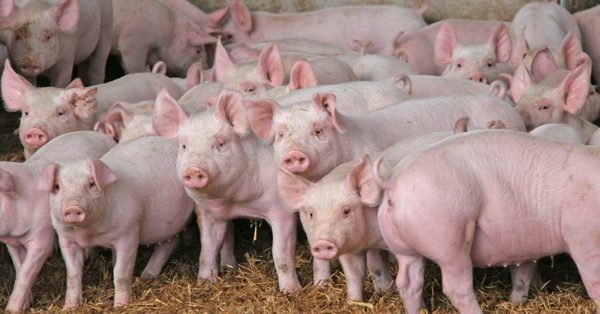
Content sponsored by:
Evonik Animal Nutrition
New SID database includes weaner pigs
Published: September 4, 2018
By: Evonik Animal Nutrition

Evonik has launched a new standardized ileal digestibility (SID) database for swine feeds which – for the first time – provides SID values of all amino acid for weaners, as well as for grower pigs. The new information means that feeds formulated specifically for weaners will no longer need to be based on digestibility data from growers – which should more closely meet requirement and result in enhanced performance, as well as reduced nitrogen excretion.
The Evonik Swine SID Compendium (2018) provides up-to-date SID coefficients for all essential and non-essential amino acids for 73 different ingredients used in grower feeds, and 43 ingredients used in feeds for weaner pigs. The data is based on numerous scientific studies and publications.
“Formulating feeds based on the standard ileal digestibility of amino acids is the most effective way to optimize nitrogen utilization, while at the same time minimizing its excretion into the environment,” explains Dr. Alfred Petri, Senior Vice President Sales Animal Nutrition.
“Until now, feeds for weaners have been based on the same SID values as those for growers, even though digestibility of amino acids can be lower in younger pigs.
“This new data will mean that feeds can be formulated to meet the specific needs of weaners more closely and, therefore, reduce the risk of supplying too much, or too little, of specific amino acids for optimal health and growth.”
Nitrogen release by production animals is directly related to excess crude protein in the diet and the digestibility of amino acids. Concern over the environmental impact of nitrogen has led to increasing scrutiny by governmental agencies.
“A greater understanding of the digestibility of different amino acids at different ages could help us to minimize the amount of nitrogen being released into the environment,” says Petri.
“In addition, it has the potential to reduce the amount of crude protein in the diet, and thus reduce feed costs.”
The Evonik Compendium has SID coefficients for the amino acid content of 73 ingredients used in feeds for growing pigs, including 10 cereals, 14 cereal byproducts, six pulses, six brewing and distilling products, 18 oilseeds and meals, 13 animal and milk byproducts, and six other feedstuffs. For weaned pigs there is data on 43 ingredients, including nine cereals and cereal byproducts, two pulses, two brewing and distilling products, 13 oilseeds and meals, 13 animal and milk byproducts, and four other feedstuffs.
Source
Evonik Animal NutritionRelated topics:
Influencers who recommended :
Steffen Hansen, Joe Crenshaw and 1 moreRecommend
Comment
Share
10 de septiembre de 2018
Formulating diets using SID values is a good approach to count how much of each AA could be potentially used by the pig. However, having separately SID values for weaned and grower pigs, is a step closer to accuracy.
Recommend
Reply

Would you like to discuss another topic? Create a new post to engage with experts in the community.




